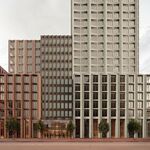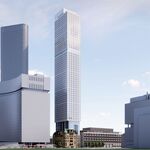waterloowarrior
Senior Member
I think we can say the land around stations will increase in value, and existing landowners will be tempted to sell to developers. In order to recoup the higher purchase price, they will have to build higher density to developments to sell a greater number of units. Some owners will not sell and will develop themselves, hoping to use the LRT as an attraction to sell a greater number of units. Either way, densities will go up - though how quickly is anybody's guess.
The one question that I'm interested in seeing is:
Whereas the city has set forth height and density limits along the avenues to keep the developments "pedestrian scale", will developers be able to build profitable buildings within those restrictions?
Found some interesting stuff on the City's website re: Avenues... mid-rise vs high rise pro forma
http://www.toronto.ca/planning/midrise_proforma.htm
and midrise economics workshop
http://www.toronto.ca/planning/midrise_workshop3.htm




